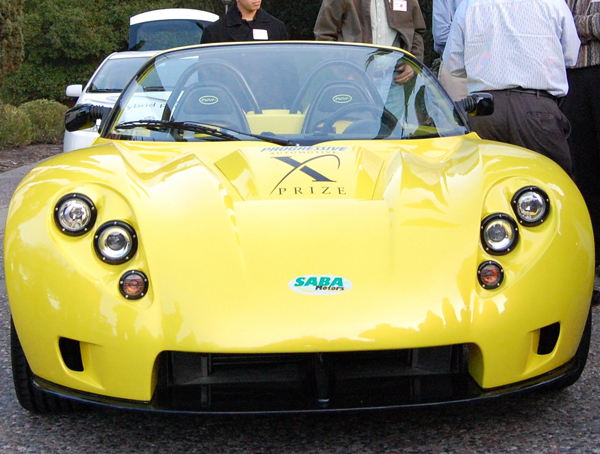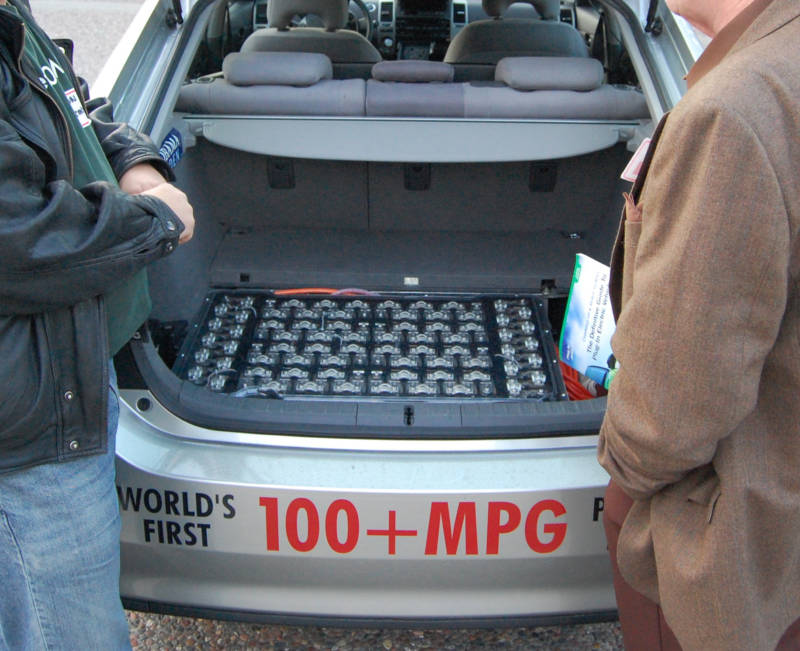David Ferry is a freelance writer and former Climate Watch intern, based in the San Francisco Bay Area.

By David Ferry
Electric vehicles can reduce emissions, save money on fuel, and, according to their enthusiastic proponents, are even fun to drive. But are “normal” people ever going to buy one?
Despite the perceived benefits of going electric–and the all-out push from auto companies to roll out EVs as soon as possible–experts predict that American consumers will purchase about a million electric cars in the next five years (by automotive standards, that’s a small number). There are, of course, a number of reasons why the average driver would be hesitant to drop $30,000 on a strange new car, but the one that automakers (and the press) love to fret over is called “range anxiety”.
Range anxiety is the fear that your electric car will run out of juice miles from the nearest charging station. Most electric cars have significantly shorter ranges than their gas-powered cousins, and batteries take hours to recharge. As a result, studies have shown that an EV’s “electric leash” makes drivers nervous and may ultimately keep consumers from switching from unleaded to AC.
This apparent fear of being tethered raises two questions for academics and execs: How can automakers and municipalities reduce range anxiety? And does the condition even exist?
A hundred years ago, before our vast network of public fueling stations was developed, early automotive adopters installed gas stations in their own homes and carried cans of petrol with them. Nowadays, an EV owner can convert the plugs in their garage but, as one panelist pointed out at a forum on electric cars last week, when your electric car’s meter hits zero, the only way home is a flatbed truck.
So, how do you ease that anxiety? Nissan and the political leaders of nine Bay Area counties think that installing a public system of quick-charging stations will help. Nissan, which is releasing the electric LEAF this December, is working with the local officials to bulk up the region’s free vehicle-charging infrastructure. The hope is that easily accessible recharging stations will accelerate sales and bring some peace of mind to jittery EV buyers.
“It’s a psychological thing,” says Ron Freund, a board member of Plug In America, who also sat on the panel at St. Mary’s College in Moraga, last week. Freund says that while public charging stations often go unused, EV owners drive farther and worry less in cities with easily accessible charging stations.
(For a take on the strain all these electric cars may place on the grid, see Alison Hawkes’ post and companion radio story: “Invasion of the Electrics.”)
Alas, the meager number of public charging stations already installed won’t rid electric car owners of their fear of hitting “E”, says Andy Frank, a professor of mechanical and aeronautical engineering at UC Davis.
“With EVs, there will always be range anxiety,” he says. Even though most people drive their cars fewer than 35 miles a day and single trips are generally under 11 miles (well within the range of electrics like the Nissan LEAF) recharging takes hours longer than gassing-up does, and consumers are hesitant to be without a car for 5-8 hours.
Which brings us to the contrary view: maybe range anxiety isn’t all that big of a deal. Tom Turrentine, director of the Plug-in Hybrid Electric Vehicle Research Center at UC Davis, says it’s all hogwash.
“It is not as if potential EV drivers will buy a vehicle and head out to go to Lake Tahoe or grandma’s house suddenly to find themselves short on charge. Most of the drivers we have interviewed over the years never encounter such situations,” Turrentine wrote in an email. “They buy the vehicle and use it in a space that is comfortable for the range of the vehicle, seldom running it down below 50%, especially when they first own the vehicle. We all know our laptops are good for about 2-3 hours and don’t take them backpacking for that reason. If they go to Tahoe, they’ll take the hybrid or gas vehicle.”
Turrentine notes that most people in the market for an EV come from multiple-car households. Frank and Turrentine agree that an EV may make a very handy second car, but it’s a pain if it’s your only one.
So, who’s going to buy an electric car? People like Ron Freund, the board member from Plug-in America:
“I think it’s kind of an adventure,” he said, when asked about range anxiety. “I make it a game: I like to see how little energy I can use to go a mile.”

4 thoughts on “Curbing Range Anxiety”
Comments are closed.

Ha–I guess I am “abnormal” because my wife and I both drive them.
We worried about range…until we got one. It has absolutely not been a problem. Remember that you start with a full “tank” every morning. And that if you go somewhere and need more of a charge, you don’t have to wait until it gets full–you only need enough to get home.
A “flatbed truck” is not the only option. Electrical outlets are much more numerous than gas stations; if you don’t run out of gas (and especially if you don’t drive enough to fill up every day or two), you are pretty unlikely to run out of electricity. Worst case, you might have to wait a while if a low-power plug is all you can find. But even that has never happened to us.
A one-car family that drives a lot should probably consider a PHEV instead. But there is no reason for any two-car family to avoid BEVs because of range worries.
Our experience is about the same. We drive a Tesla 55 miles every day, and add some other trips sometimes.
Come home, plug in, an hour later it’s full. Go on errands, come home, an hour later it’s full.
Go out to dinner, come home, plug in, wake up in the morning and start again.
Longest I’ve gone is 175 mile round trip at high speeds on mountain roads. No sweat.
Did you ever drive across Nevada at night and wonder if you’d make the next as station?
This evening we saw a guy carrying a gas can to his dead car on the I-90 bridge. We laughed because everyone asks “what happens when you run out of power” but the fact is we’d never run out of power on the bridge because we start every day with a full charge. When you no longer have to make a special trip to fill up, you’ll wonder why you ever tolerated that hassle.
Thank you for this article!
I would probably not be in the market for an EV anytime soon but appreciate learning about the pros and cons, how problems are being solved, and
the extent to which perceived problems are real.
Your introduction hooked me in, and the facts, quotes from experts, and writing style were satisfying. Also, comments in response to your piece were informative and fun to read!